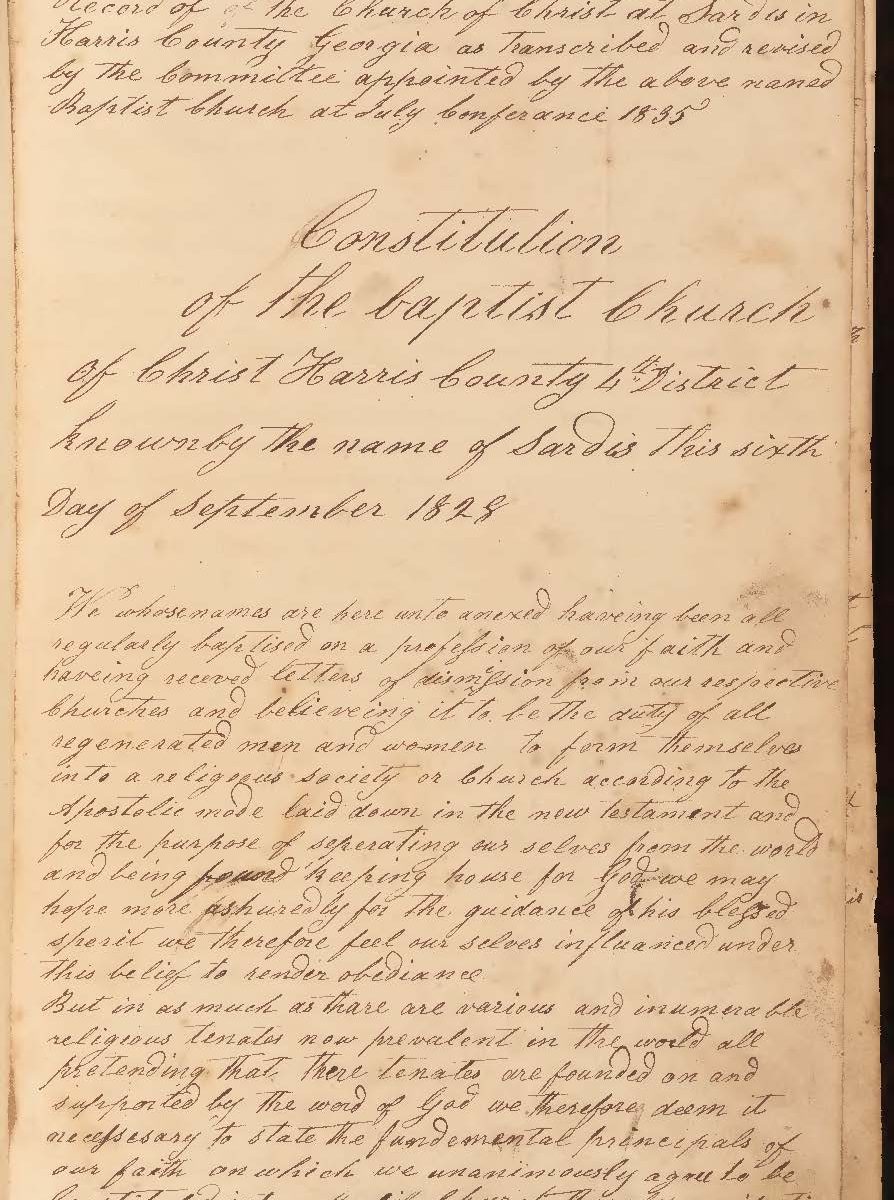ATHENS, Ga. — Three institutions are recipients of the seventh set of service grants awarded in a program intended to broaden partner participation in the DLG. The DLG solicited proposals for historic digitization projects in a statewide call, and applicants submitted proposals for projects with a cost of up to $7,500.00. DLG staff will provide free digitization, scanning, and hosting services so that more of Georgia’s diverse history can be found online for free. This subgranting program was presented the 2018 Award for Excellence in Archival Program Development by a State Institution by the Georgia Historical Records Advisory Council (GHRAC).
The recipients and their projects include:
Lee County Library (Leesburg, Ga.)
- Digitization of the Lee County Library Local History Collection which contains print material dating from 1784-2000 that includes church histories, local Lee County history, and documentation of the 1994 Southwest Georgia flood.
Saint Paul’s Church (Augusta, Ga.)
- Description and hosting of the handwritten vestry minutes, parish and marriage registers, and commemorative materials of Saint Paul’s Church, Augusta’s oldest congregation founded in 1750.
Hargrett Library, University Archives
- Digitization of the University of Georgia’s Pandora yearbooks dating from 1965-1974, which include the aftermath of desegregation, the beginnings of the black student, the women’s liberation, the gay liberation, and the campus free speech movements.
Preference in the selection process was given to proposals from institutions that had not yet collaborated with the DLG. Saint Paul’s Church and the Lee County Library are both new partners for the DLG. Sheila McAlister, director of the Digital Library of Georgia notes: “Our latest slate of projects includes two new partners, a public library and a church archives. The projects document the history of Lee County, the activities of one of the oldest churches in Augusta, and student life at the University of Georgia during a period of enormous social change. With each new project, we’re able to illuminate more of the state’s history.”
About the Lee County Library
The Lee County Library is a public library serving the Lee County, Georgia area. Learn more on their website at leecountylibrary.org/.
About Saint Paul’s Church
Saint Paul’s Church is a community of people committed to the service and worship of Jesus Christ in their current location for over 250 years. With their roots deeply embedded in the city of Augusta and the surrounding area they “seek and serve Christ in all persons.” They are also rooted in their Anglican (Church of England) heritage and are an integral part of the Episcopal Diocese of Georgia. Visit their web site at www.saintpauls.org/.
About Hargrett Library, University Archives
The University of Georgia Archives preserves over two centuries of the University’s history in the form of official records, images, plans, publications, and artifacts. Their mission is to acquire, organize, preserve, and publicize such materials and to assist researchers in their use. Visit them at libs.uga.edu/hargrett/archives/.


